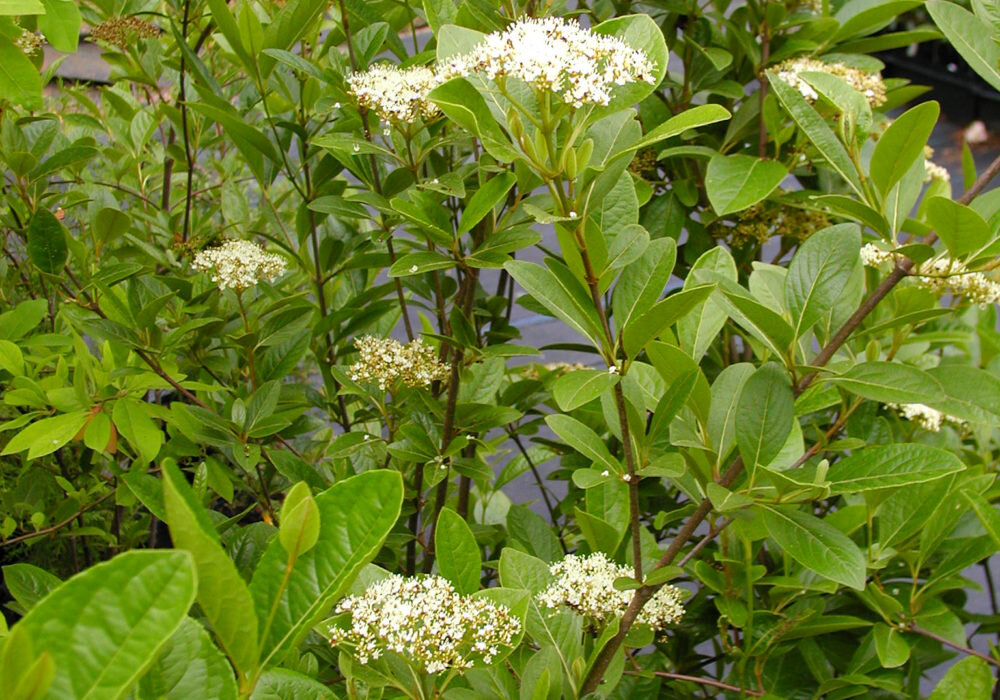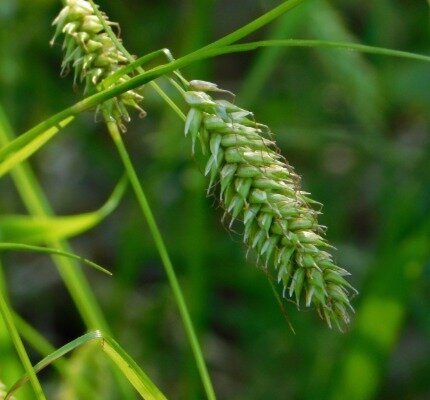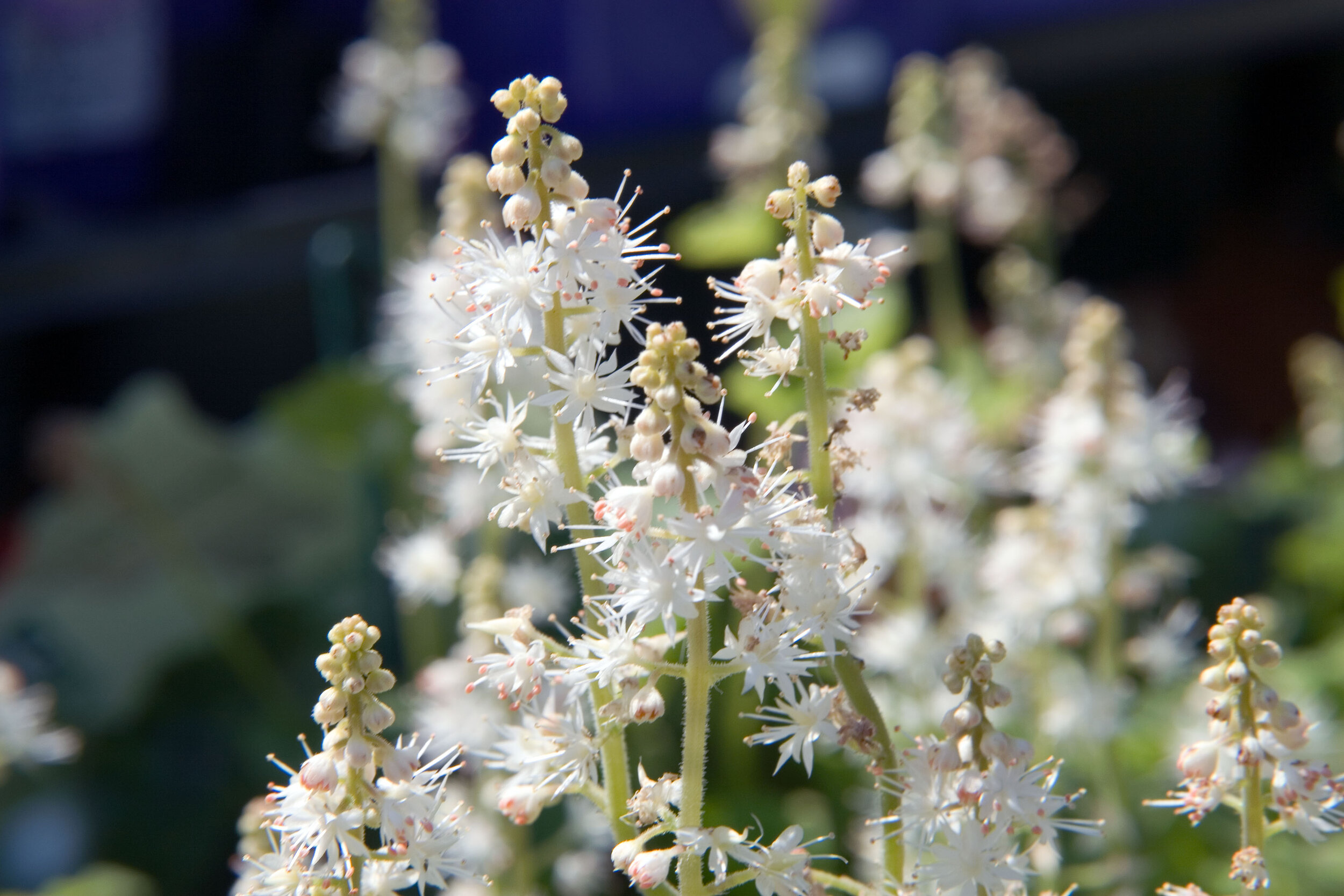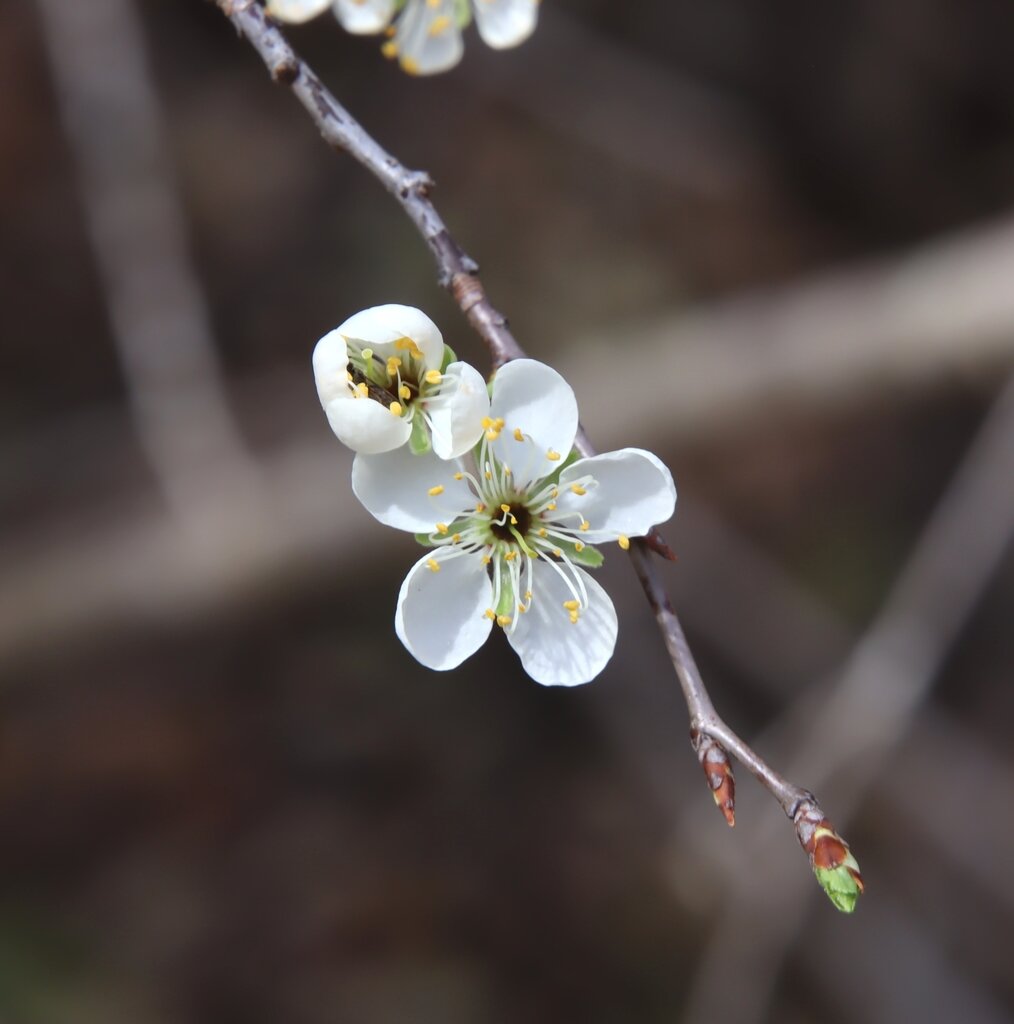
Historic Release of Eight Endangered American Red Wolves
This collaborative effort is the first time since 1998 that adult American red wolves were released directly into the recovery area of Eastern North Carolina.

Coyote Logistics Volunteers Clear Invasive Species
Invasive species management is a daunting and ongoing task. We thank the volunteers of Coyote Logistics for spending Earth Day with us and helping to remove Chinese privet and restore habitat for native plants and wildlife.

Carolina Allspice or Sweetshrub
Carolina Allspice or Sweetshrub – Calycanthus florida – is a deciduous, rounded shrub reaching a height of 6 to 9 feet and a drip width of the same. The leaves are simple, opposite, 2 to 6 inches long and turn a bright yellow in the late autumn and winter. In mid tolerate spring, it produces a red to purple, fragrant flower.


Dwarf Crested Iris
Dwarf Crested Iris – Iris cristata – is a perennial herb and is a member of the Iris family (Iridaceae) that is rather low in stature, attaining a height of only 4 to 16 inches tall. It has light blue sepals with a white or yellow striped band.

Happy Birthday to Reflection Riding’s Red Wolves!
April and May are Red Wolf birthday months! Red Wolves only breed one time per year with the breeding season in January, February, March (usually late January into February in the southeast) with a 63 day gestation period leading to April and May birthdays.

Smooth Witherod
Smooth witherod (Viburnum nudum) is a stunning, perennial, deciduous shrub found throughout the eastern and southeastern United States from Connecticut to Florida and then westward to Louisiana.

Cherokee Sedge
Cherokee sedge (Carex cherokeensis) is a perennial member of the grass group of plants. It is a native plant to the southeastern and southcentral portions of North America.

What Owl is That?
As Reflection Riding’s Wildlife Director, I get asked a lot of animal questions — one of the most frequent is, “I have an owl that lives in my woods that I can hear and see, but I don’t know what kind it is.”

Foamflower
Foamflower (Tiarella cordifolia) is an herbaceous perennial plant found in the Saxifrage (Saxifragaceae) family.

A Trumpet in the Orchestra: The Migration Patterns of Sandhill Cranes
“When we hear his call, we hear no mere bird. We hear the trumpet in the orchestra of evolution.”
— Aldo Leopold, father of modern-day wildlife management


Spring Beauty
I thought of spring beauty as an uncommon woodland edge wildflower until I saw them in so many yards in Chattanooga. You can think of them as one of the few remnants of the native forest and grasslands that once stood here. They have somehow managed to persist in the urban and suburban lawn habitats that replaced the native ones. Some of the plants may be decades old or older.

Carolina Jessamine
As ornamental plants go, Carolina jessamine is at the top of its class. Luckily for native plant enthusiasts, it is also one of our best native southeast species. It is a hardy, evergreen that has striking early spring blooms making it an ideal ornamental vine.

Weed Wrangle 2021 Was a Success!
On Saturday, 6 March 2021, an intrepid group of weed warriors gathered to whack, wallow, and wrestle a whopping lot of the wily unwanted weed Ligustrum sinense (that’s Chinese privet to you and me) out of the ground by its rascally roots!

Chickasaw Plum
Chickasaw Plum has extensive wildlife values, offering protective cover from predators and nesting habitats for critters. Chickasaw Plum also serves as a larval host for several butterflies and provides nectar for pollinators, while the fruits are often eaten by birds and small mammals.

American Witch Hazel
American witch hazel (Hamamelis virginiana) is native to North America growing from Canada to Georgia westward often to Kansas and Louisiana. This species is a flowering, deciduous shrub and blooms very late in the season, usually flowering between October and December.

Switchgrass
Switchgrass (Panicum virgatum) is a native ornamental of the grass (Poaceae) family found pretty much throughout central and eastern North America. It achieves a height of 3-6 feet tall and a width of 2-3 feet. Switchgrass blooms from July through February with a light pink flower; the autumnal color is a pale yellow.

How We Protect Red Wolves
The American red wolf is the most endangered canid in the world. With the 10 known wild red wolves roaming a single recovery release site in northeastern North Carolina and approximately 250 in captivity, breeding is critical to this species’ survival.


